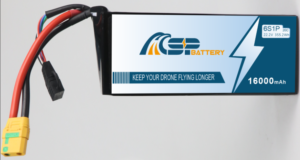Introduction
The use of LiPo batteries in drones is continuously increasing owing to the increase in the number of drones in the market. The Federal Aviation Administration expects a continuous and strong growth of drones for data collection and aerial imaging including the emergency and rescue operations.
Any drone is subject to fault conditions which may result in various problems. A LiPo battery may catch fire while charging. Any fault occurring in the middle of the flight is an indication of a series of electrical issues. These are the things that justify why LiPo batteries come with a robust electrical protective wall.
Advanced technology has provided a growing list of tools and techniques in order to implement the LiPo batteries' safety system. These techniques also provide protection against electrostatic discharge (ESD)
Protecting LiPo batteries and the charging circuits
It is common knowledge that all drones require drone batteries on board to power them as they conduct their operations. As you already know, Lithium polymer (LiPo) batteries are the most common drone batteries. This is because they offer high energy density compared to their weight and size. They have a higher voltage per cell meaning they are able to effectively power the onboard system of the drone with much fewer cells compared to other rechargeable batteries.
LiPo drone batteries also discharge much more slowly compared to the other types. They will be able to hold their charge for quite a long time when they are not in use. They however may fail you as they will not provide optimal performance for long enough if you don’t charge or use it properly. LiPo drone batteries may also start smoking or catch fire due to mishandling.
The over-charge and over-discharge of drone batteries are two external events that may lead to Lithium-Ion drone battery problems. When the drone battery over-discharge, if the voltage of the cell battery drops lower than 1.5V which is approximate, there will be gas produced at the anode. If the voltage of the drone battery drops below 1V, the copper at the current corrector will dissolve thus causing internal short-circuiting of the cell.
Therefore, you need under-voltage protection which is provided by the protection IC of the battery. Over-charging will create gassing leading to a heat build-up at the cathode as the battery voltage reaches approximately 4.6 volts.
Options for protecting LiPo drone batteries
Although the cylindrical cells come with internal protection from pressure, the activated current interrupt devices (CIDs) as well as internal positive temperature coefficient discs that increase in resistance when heated (PTCs), LiPo cells lack both the PTCs and the CIDs. The external overvoltage, over-temperature protection, and over-gas are especially very critical for the Li-polymer cells.
There are various options available for short circuit protection that can help you guard your LiPo drone batteries against both over-current and over-temperature conditions. This include:
- PolySwitch PPTC devices
- metal hybrid PPTC with thermal activation (MHP-TA) devices
- surface-mount fuses
- low resistance SMD PPTC devices
The MHP-TA devices will combine both the advantages of:
- low thermal cut-off temperatures
- compact size
- high hold-current ratings
All these are invaluable when it comes to the protection of LiPo drone batteries. The latest MHP-TA will offer a 9VDC rating as well as a high current rating compared to ordinary battery thermal cut-off devices. They will handle battery charge and high voltage rates only common in high high-capacity LiPo drone cells.
Most of them come with resettable and accurate protection for over-temperature. Their compact footprint, as well as thinness, simplify the circuit protection in ultra-thin battery pack designs.
Battery Chemistry
In other battery chemistries like Lithium-Ion (Li-Ion), nickel-cadmium (NiCd), or nickel metal hydride (NiMH), the PolySwitch PPTC resettable devices offer a far much better solution. They are not only compatible with the high-volume electronic assembly.
Their CSA, UL, and TUV agency recognitions will make it easier for their designers to meet all the regulatory requirements. They also come with low resistance which helps them increase the battery operating time and enhances thermal events over-temperature protection.
The small-footprint POLYFUSE LoRho Surface Mount Resettable PPTCs are suitable for protecting the circuit modules for Lithium Ion and Lithium Polymer battery packs. This provides a fast over-temperature and over-current protection with low resistance, power dissipation, and voltage drop. With the automatic reset, they are able to offer a low-maintenance alternative to a one-time fuse for over-current protection.
Since they are packaged for surface mounting on a printed circuit board (PCB), they can be mounted with an electronic protection module on the board. This simplifies the assembly process.
Although both fuses and PTCs are over-current protection devices, the PTCs can be reset automatically. The traditional fuses will need to be replaced once they are tripped. A fuse tends to completely alter the flow of current (necessary in some critical applications). But after similar over-current events, the PTCs continue enabling the device to function except in some extreme cases.
Conclusion
The new and advanced technology has made it possible to have the safest and most reliable LiPo drone batteries for use in your drones. You can now fly sure and confident that no harm or injury can happen with a well-protected LiPo drone battery despite the circumstances and situations. Simply take time to understand the LiPo drone battery you are buying. Here at SPP, we provide nothing but the best of LiPo drone batteries that not only last you long but also are safe and durable. Contact us today and we will give you the best drone battery on the market.



